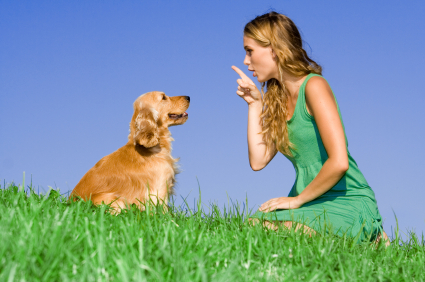When it comes to changing an existing undesirable response to stimuli there are four approaches to be considered. There are two types of habituation: Flooding and Desensitization, and two types of counter-conditioning: Classical Counter-conditioning and Operant Counter-conditioning. In this short article, I define these techniques, but please consider that this is a quick introduction to applied behavior analysis and it is not recommended that you attempt a behavior change program without the guidance of a professional.
Habituation
Habituation is an approach that exposes an animal to a response-eliciting stimulus and over time, through repeated exposure in the absence of any aversive or pleasant stimuli, the response diminishes. Generally speaking, this is considered the animal just “getting used to it.”
Flooding is a type of habituation that exposes an animal to a stimulus at full force, where a response would be elicited, with the idea that the animal would eventually become used to the stimulus over time. However, if the animal is fearful of the stimulus, flooding can actually cause sensitization thus causing the response to intensify and the animal to become even more fearful of the particular stimulus.
Desensitization occurs when a stimulus is presented at a reduced intensity so as to not elicit the response and gradually and incrementally the intensity is increased at a pace that is slow enough to avoid causing the original response. Desensitization involves the very careful manipulation of the antecedents that predict the behavior to actually prevent the behavior response from happening in the first place. Without antecedent control procedures, desensitization cannot occur.
Counter-Conditioning
Classical Counter-Conditioning involves the conditioning of a new association between an unconditioned stimulus and the conditioned response. In other words, through conditioning, we teach the animal that the thing they find aversive actually predicts pleasant events such as food delivery, a favorite toy appearing, or a fun game commencing. Typically in animal training, when applying behavior change protocols, a behavior consultant will employ both Systematic Desensitization and Classical Counter-conditioning together to not only present the fear-eliciting stimulus at sub-threshold intensity but also condition a new pleasant association with that same stimulus.
Operant Counter-Conditioning is teaching a new behavior or a series of behaviors to replace an existing problematic or undesirable behavior. Usually a behavior consultant will construct a contingency statement to identify the ABC’s of the current behavior contingency and then formulate a plan to teach an incompatible or alternate behavior to replace the existing behavior response or cluster response. Similar to Classical Counter-conditioning, this type of conditioning is best to be combined with systematic desensitization for the careful manipulation of stimulus presentation to avoid the original behavior response. Because this approach to training is a pleasant experience due to the use of positive reinforcement, a new association is simultaneously being conditioned. Therefore, the animal is not only learning new, more appropriate behaviors, but also a new association with a previously aversive stimulus.
Please do not attempt behavior change protocols for extreme behaviors such as aggression, extreme fear and phobias, without a highly trained and credentialed behavior consultant. Certified Canine Behavior Consultants are knowledgeable and experienced professionals who can safely guide you through a systematic behavior change program. To find a behavior consultant or dog trainer in your area visit www.ccpdt.org or www.karenpryoracademy.com.
by Niki Perry, CPDT-KA, KPACTP, CEMT, Release the Hounds Board Member
Niki’s website: The Beloved Beast
Read More About Dog Behavior & Training:
How to train dogs without the use of treats.
Top 10 Tips on How to Train Your Dog
10 Reasons Why Punishment Fails in Dog Training
Clicker Training – Overview by Niki Perry
Potty Training Tips for Dogs by Nikki Perry
Ultimate Guide For How to Stop Dog Barking – Growling and Barking Solutions





